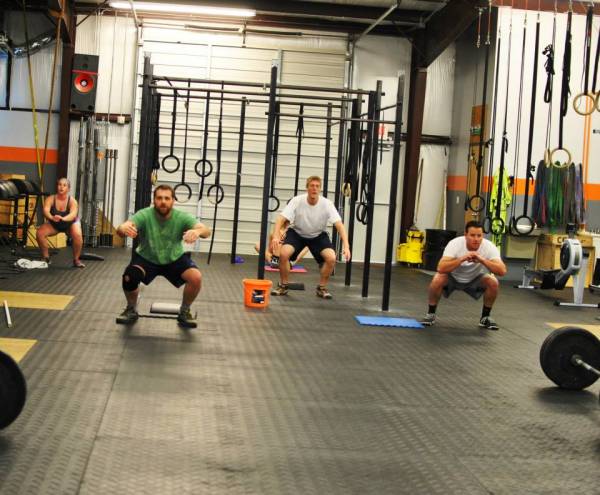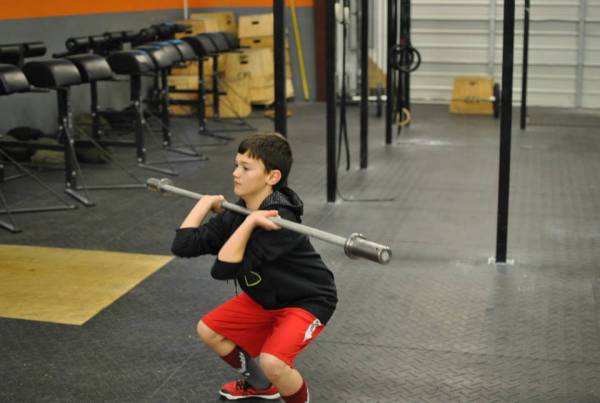Warm up movements are an essential part to any training session for athletes. They prepare the body both mentally and physically for the forthcoming session, reduce the risk of injury, and have been found to increase performance.
Weightlifting (meaning the snatch and the clean and jerk) has been heavily researched in the world of strength and conditioning and has been highly associated with performance enhancement in a variety of sports.1 But let’s look further into the research. It is more common than not to find most of the research on power and its transferability has been carried out on elite weightlifters. But if your client is a talented track and field athlete with no previous experience in Olympic weightlifting, are you likely to attain the same results as the studies may suggest?
And what does this have to do with warming up?
Where to Put Weightlifting in Your Programming
Some studies have concluded that the best power outputs are created between 70-80% of a one-repetition max (1RM).3 So, it is logical to assume that a beginner has not yet established a true 1RM, and therefore basing performance on percentages is impossible. It is possible that our theoretical athlete may express a large amount of power already, due to being such a talented individual, but until she is competent in executing the technical model of weightlifting, there remains a question in the use of weightlifting movements in the periodized model. Or does there?
We are aware there is an ability to attain some good performance outcomes from utilizing the weightlifting movements in the strength and conditioning programming of our athletes. But we are also aware that these benefits are generally attained once some technical competency has been accomplished and a true 1RM has been established. So, how can we harness these gains? By thinking outside the box and using the warm up not only as a mechanism to prepare our athlete, but to teach her new skills.
The Weightlifting Warm Up in Action
Ranges of sports professionals now commonly use the RAMP (raise, activate, mobilize, and potentiate) warm up method and similar models. The basis of these methods is to raise the pulse and get the blood flowing, activate muscles for use in the session plan, mobilize the joints required for the session and commonly used in other sessions (retaining range of motion for future exercise and in the sport), and potentiate a movement similar to that of the exercises to follow.
Now, look at the competition lifts. To execute the lifts will require great mobility. Below is a warm up sequence you can follow whether you are training the clean or jerk or the snatch. As you or your athlete works through this, you will also find these exercises fall into the category of raising a pulse and mobilizing (and even activation to some extent).
- Air squats
- Lunges
- Empty barbell stiff-leg deadlifts
- Empty barbell good mornings
- Empty barbell squats

You may also wish to undergo some kind of mobilization prior to this, such as ankle rolls, wrist rolls, and shoulder dislocations.
Once you have done this sequence, you can move onto to various components of the lifts, which can carryover to be your activation or potentiation components of the warm up. This may be parts of the pulls or parts of the jerk. The world is your oyster! If competency is demonstrated, then you may move the athlete on to the full lift for a few sets at the end, still with just an empty bar.
The Benefits of Putting Weightlifting in the Warm Up
There are a number of positives to using the weightlifting movements as a warm up. It doesn’t have to take long. This may only take up to fifteen minutes and will get your athlete prepared for the session. It will tick all of the boxes required of a warm up in general. And ultimately, it will teach your athlete good mechanics in how to execute the lifts. With this association to the technical model, you are allowing greater performance carryover to the athlete’s respective sport, which you will soon be able to load.
Additionally, this is a safe warm up. You can replace the barbell with a wooden dowel in the above exercises, and then you have an equally good model to warm up youth athletes. An added benefit to this is that when your youth athlete takes the jump from junior competition to senior competition, he or she will have the skill to perform the weightlifting movements and the ability to attain greater performance outcomes at a crucial moment in his or her athletic career. Realistically, this is exactly how weightlifting should be utilized. Pattern the movement at a young age (ten to fifteen years old), so when your athletes come into the late stage of adolescence (fifteen to eighteen years old) they have this tool available to use.

Don’t ignore the lifts because you aren’t able to reap the benefits from them right now. Use them to your advantage in other ways: prepare your athlete for the session as a warm up, and prepare him or her safely at a young age. Think of training as a process. Longitudinally, the hard work will be rewarding.
References:
1. Hori, N., Newton, R., Nosaka, K and Stone, M., “Weightlifting Exercises Enhance Athletic Performance That Requires High-Load Speed Strength.” Strength & Conditioning Journal 27, no. 4 (2005): 50-55.
2. Carlock, J, et al. “The Relationship Between Vertical Jump Power Estimates and Weightlifting Ability: A Field-Test Approach.” Journal of Strength & Conditioning Research 18, no. 3 (2004): 534-539.
3. Cormie, P., McCaulley, G., Triplett, T., and McBride, J. “Optimal Loading for Maximal Power Output during Lower-Body Resistance Exercises.” Medicine & Science in Sports & Exercise 39, no. 2 (2007): 340-349.
Photos courtesy of CrossFit Impulse.






